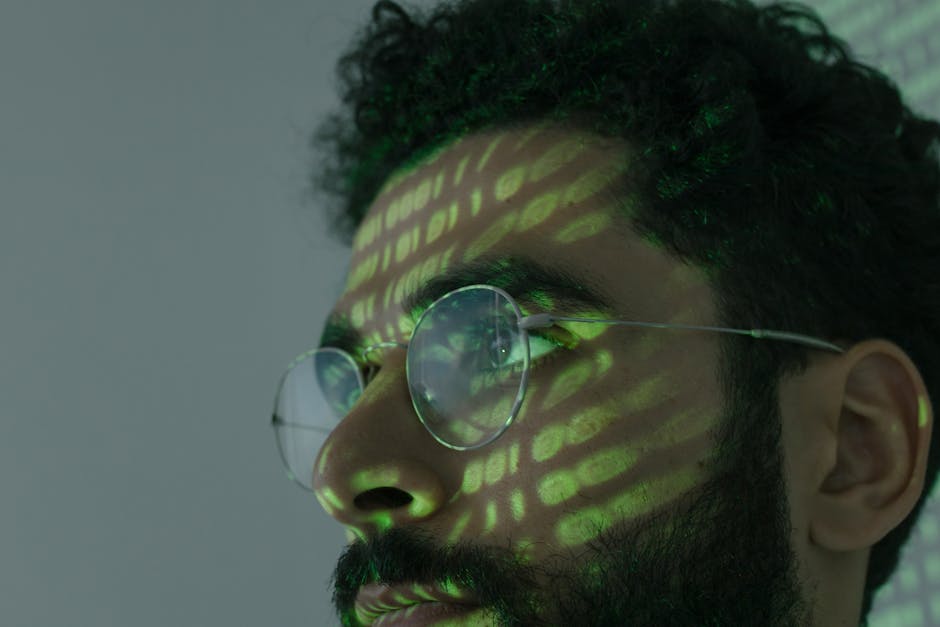The Future of Race Photography: Facial Recognition Features
Are you ready to capture race photography like never before?
Imagine the power of facial recognition technology, revolutionising how we document diversity.
In this article, we delve into the future of race photography and its potential impact on diverse communities.
Discover the ethical concerns and racial biases that arise, as well as the quest to enhance representation in this art form.
Join us as we explore the balance between accuracy and privacy, and peer into the exciting possibilities and challenges that lie ahead.
Key Takeaways
- Facial recognition technology has the potential to revolutionise race photography by capturing and highlighting diverse racial and ethnic identities.
- Ethical concerns and racial biases in facial recognition technology must be addressed, including the potential for racial profiling and misidentification of individuals.
- Stricter regulations, transparency, and diversity in data sets are necessary to mitigate biases and ensure responsible use of facial recognition technology in race photography.
- Balancing accuracy and privacy is crucial in the implementation of facial recognition features in race photography, with robust data security measures needed to protect sensitive biometric data.
Understanding Facial Recognition Technology

To understand facial recognition technology, you need to grasp its capabilities and limitations.
Facial recognition technology has become increasingly prevalent in various fields, with real-time applications being one of its key features. This technology allows for the immediate identification and verification of individuals in real-time scenarios, such as security checkpoints or access control systems. By analysing facial features and comparing them to a database of known identities, facial recognition technology can quickly determine a person’s identity, providing valuable information for security purposes.
However, the use of facial recognition technology also raises concerns regarding privacy regulations. The ability to capture and analyse individuals’ facial data in real-time raises questions about the protection of personal information. Privacy regulations must be in place to ensure that individuals’ rights are respected and that their personal data isn’t misused or accessed without their consent. Striking a balance between the benefits of facial recognition technology and the protection of individuals’ privacy is crucial for its responsible and ethical use.
The Impact on Diverse Communities

Consider the potential ramifications of facial recognition technology on diverse communities, as it inevitably extends beyond security measures and raises concerns about bias and discrimination. The impact of this technology on diverse communities is a critical aspect to be examined, as it has the potential to either empower or marginalise these communities. Community engagement and cultural sensitivities should be at the forefront of any discussion surrounding the implementation of facial recognition technology.
To better understand this impact, let’s examine the following table:
| Concerns | Implications | Recommendations |
|---|---|---|
| Bias and Discrimination | Facial recognition technology can perpetuate existing biases and discriminatory practises, leading to unfair treatment of certain communities. | Robust testing and auditing of algorithms to identify and rectify biases. Engage diverse communities in the development and deployment of these technologies. |
| Privacy and Consent | Facial recognition technology raises concerns about the invasion of privacy and lack of informed consent, particularly in marginalised communities. | Implement strict regulations and policies to protect the privacy and consent of individuals. Provide clear information about the collection and use of data. |
| Inaccuracy and Misidentification | Facial recognition technology has shown higher error rates for people with darker skin tones, potentially leading to misidentification and wrongful accusations. | Improve accuracy and performance of algorithms for diverse skin tones. Conduct regular audits to identify and address any biases in the system. |
| Surveillance and Control | Facial recognition technology can be utilised for mass surveillance, disproportionately impacting communities already vulnerable to surveillance and control. | Establish strict legal frameworks and oversight mechanisms to prevent misuse and abuse of the technology. Involve communities in decision-making processes regarding surveillance practises. |
As we navigate the future of facial recognition technology, it is crucial to prioritise community engagement and cultural sensitivities. By addressing these concerns and implementing appropriate measures, we can ensure that the impact on diverse communities is equitable and respectful.
Ethical Concerns and Racial Biases

Examine the potential ethical concerns and racial biases associated with facial recognition technology as it pertains to race photography.
-
Racial Profiling: Facial recognition technology can lead to racial profiling when it’s used to target individuals based on their race or ethnicity. This can perpetuate stereotypes and contribute to discrimination and unfair treatment.
-
Algorithmic Bias: Facial recognition algorithms have been found to have biases, leading to inaccurate identification or misidentification of individuals from certain racial or ethnic backgrounds. This can result in innocent people being wrongly accused or targeted.
-
Invasion of Privacy: The use of facial recognition technology in race photography raises concerns about privacy. People may not consent to their images being captured and stored without their knowledge, especially if their racial or ethnic identity is being used as a basis for analysis.
-
Lack of Transparency and Accountability: The algorithms used in facial recognition technology are often proprietary and opaque, making it difficult to understand how they work and assess their accuracy. This lack of transparency can contribute to biases and discriminatory outcomes without proper oversight and accountability measures in place.
It is essential to address these ethical concerns and racial biases associated with facial recognition technology in race photography. Stricter regulations, transparency in algorithm development, and diversity in data sets can help mitigate these issues and ensure fair and unbiased practises.
Enhancing Representation in Photography

Address the lack of representation in photography by utilising facial recognition features to capture and highlight diverse racial and ethnic identities. Inclusivity in art is crucial for empowering marginalised communities and promoting a more equitable society. By implementing facial recognition technology, photographers can actively work towards creating a more diverse and representative visual narrative.
Facial recognition features have the potential to revolutionise the field of photography. This technology can automatically identify and categorise individuals based on their facial features, allowing photographers to capture a wide range of racial and ethnic identities. By using this tool, photographers can ensure that their work reflects the diversity of the world we live in.
To emphasise the importance of representation in photography, consider the following table:
| Representation | Impact |
|---|---|
| Lack of diversity | Reenforces stereotypes and exclusion |
| Inclusive representation | Empowers marginalised communities and challenges societal norms |
Incorporating facial recognition features in photography not only enhances representation but also provides an opportunity to challenge existing biases and stereotypes. By actively seeking out diverse subjects and capturing their stories, photographers can contribute to a more inclusive and empowering visual culture.
Balancing Accuracy and Privacy

To ensure a balance between accuracy and privacy, it’s essential for photographers to navigate the ethical implications of incorporating facial recognition features in race photography. As race photography evolves with the integration of facial recognition technology, there are important considerations that need to be addressed.
Here are four key points to consider:
-
Data security: Facial recognition technology relies on capturing and analysing sensitive biometric data. It’s crucial for photographers to implement robust data security measures to protect this information from unauthorised access and potential misuse.
-
Ethical considerations: The use of facial recognition features raises ethical concerns regarding consent and potential discrimination. Photographers must obtain informed consent from individuals before capturing and using their biometric data, ensuring transparency and fairness in its application.
-
Regulatory measures: Governments and organisations need to establish clear regulations and guidelines governing the use of facial recognition technology in race photography. These measures should address issues such as data protection, consent, and potential biases to ensure the ethical and responsible use of this technology.
-
Privacy concerns: Individuals have a right to privacy, and the use of facial recognition features should respect this right. Photographers should implement measures to anonymise or pseudonymize the data collected, minimising the risk of re-identification and protecting individuals’ privacy.
Looking Ahead: Future Possibilities and Challenges

As race photography continues to evolve with the integration of facial recognition technology, photographers will increasingly encounter new possibilities and challenges.
The future of race photography holds exciting innovations and technological advancements that have the potential to revolutionise the field. One of the possibilities is the development of real-time facial recognition algorithms that can automatically identify and tag race participants as they cross the finish line. This would eliminate the need for manual tagging and significantly speed up the process of organising and distributing race photos.
Additionally, advancements in facial recognition technology may enable photographers to capture more accurate and detailed images, allowing for better identification and documentation of race participants.
However, along with these future possibilities come new challenges. Privacy concerns surrounding the use of facial recognition technology are mounting, and race photographers must navigate these issues carefully. Ensuring the consent and privacy rights of race participants will be crucial, as well as implementing secure systems to protect the collected facial data.
Moreover, photographers will need to adapt to the ever-changing landscape of facial recognition technology, staying up-to-date with the latest advancements and ensuring their equipment and software are capable of handling future innovations.
Conclusion
In conclusion, the future of race photography holds both promise and challenges.
Facial recognition technology has the potential to enhance representation and accuracy in capturing diverse communities. However, ethical concerns and racial biases must be addressed to ensure fair and respectful practises.
As we navigate this evolving landscape, it’s crucial to strike a balance between accuracy and privacy. By embracing these advancements responsibly, we can create a future where race photography becomes a symbol of inclusivity and representation for all.
Contact us to discuss our services now!
